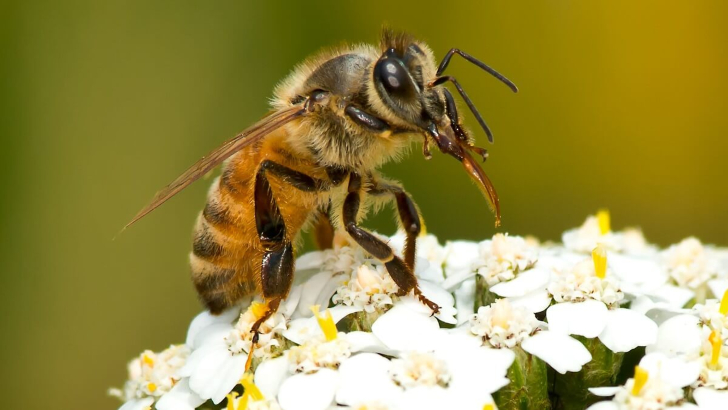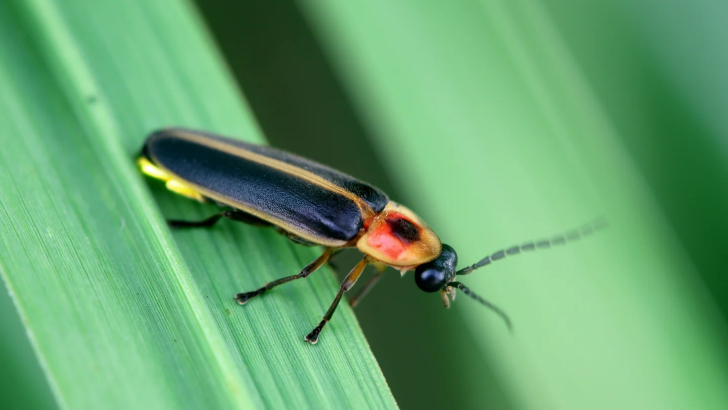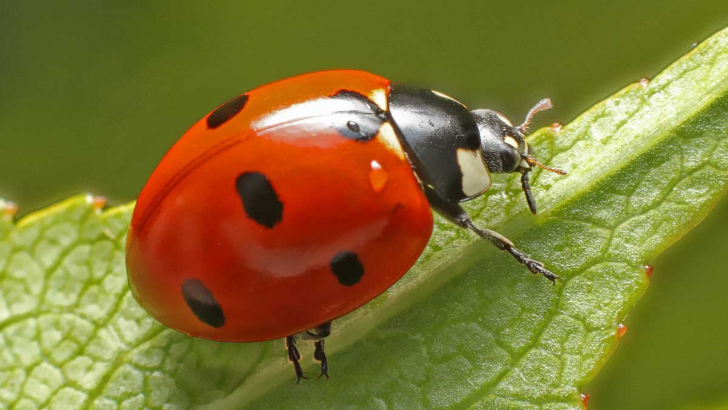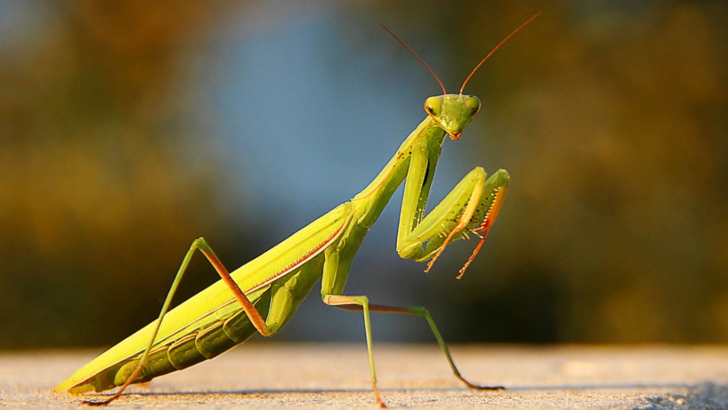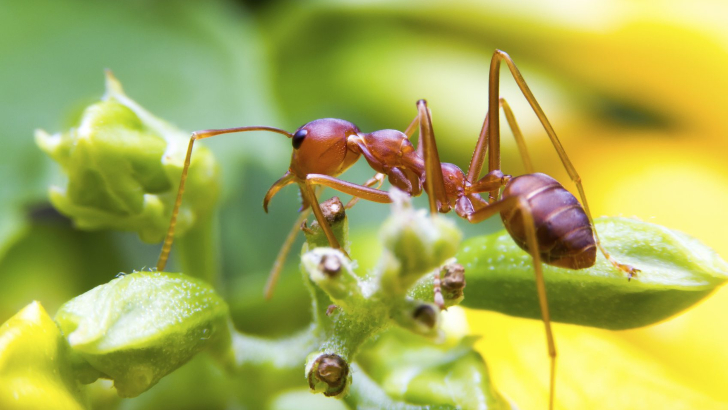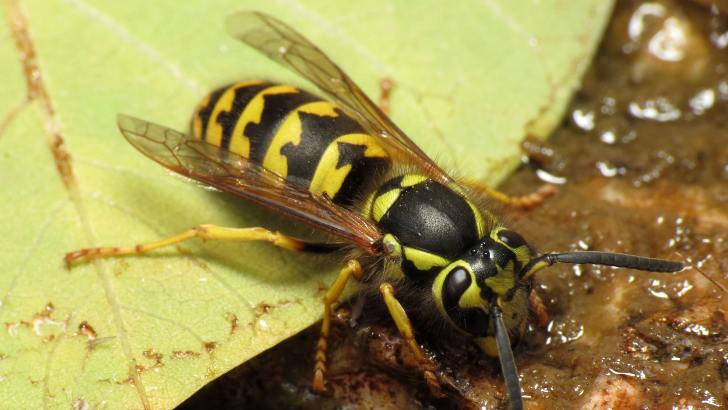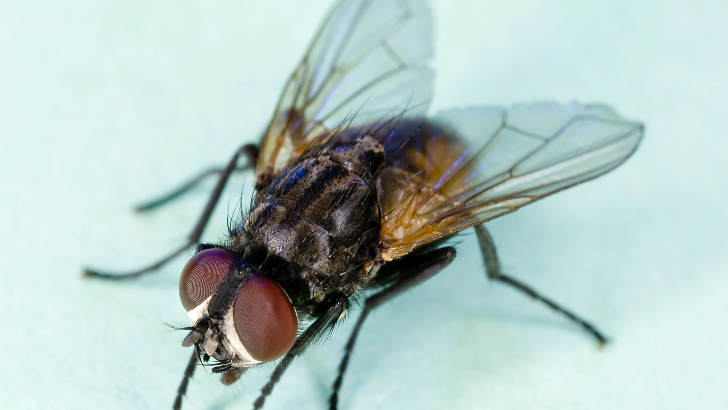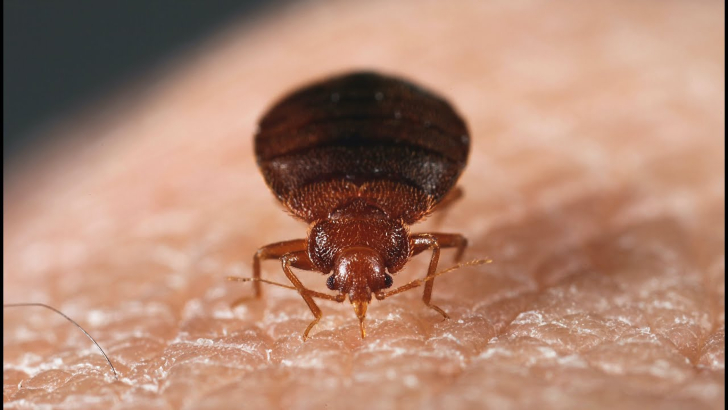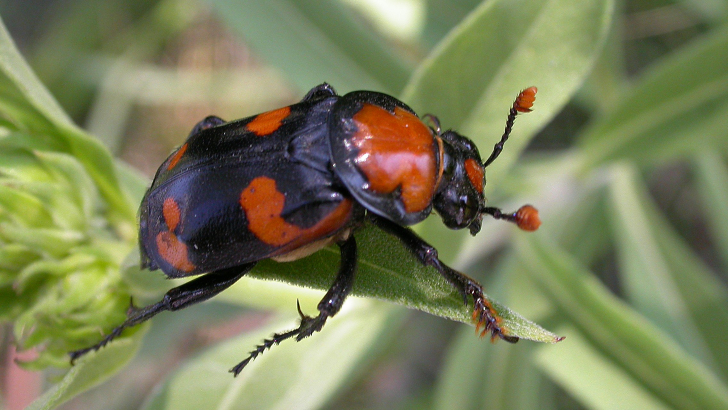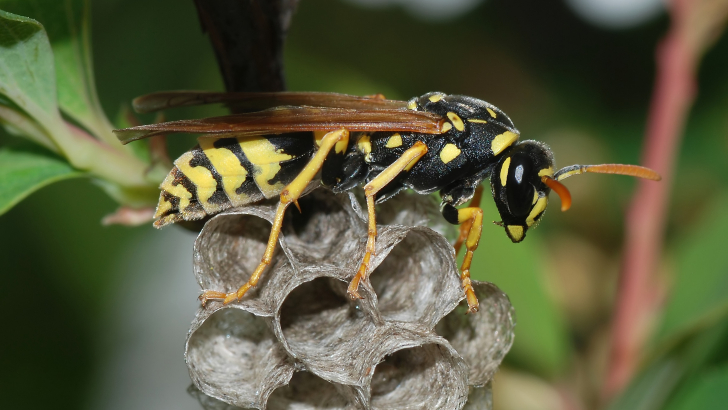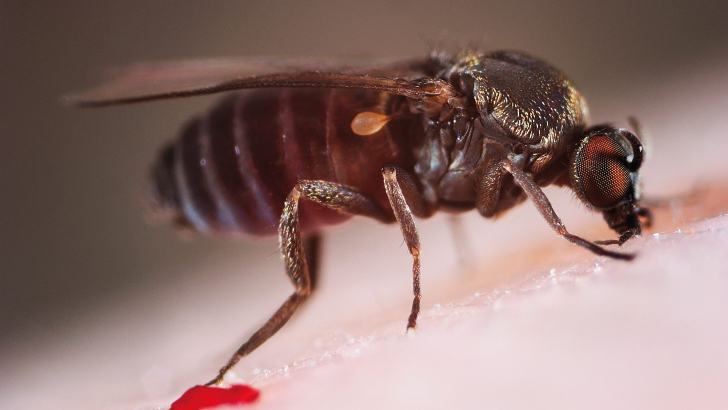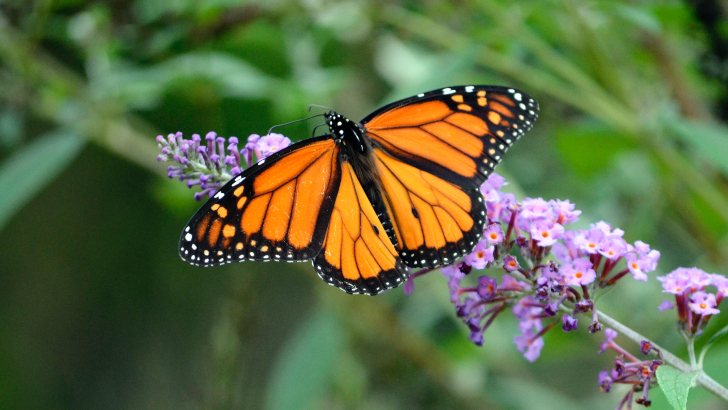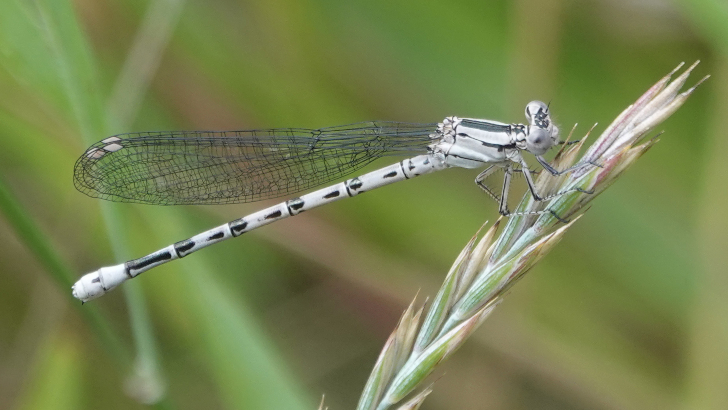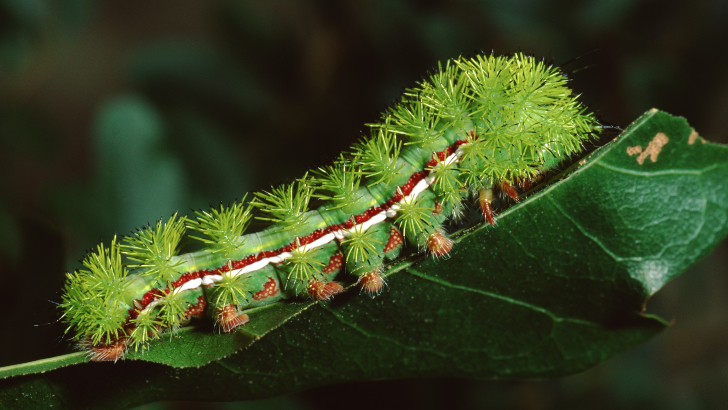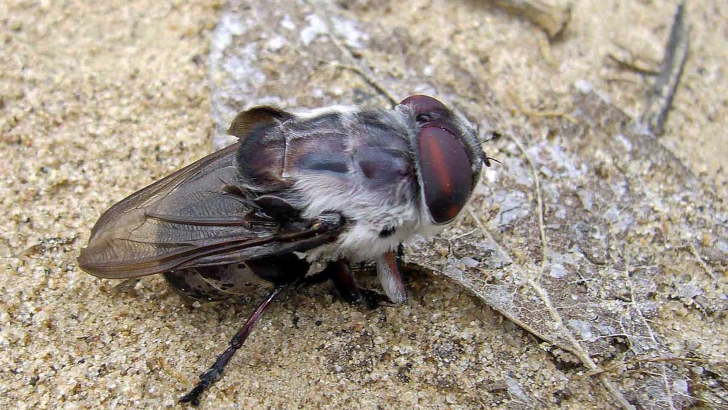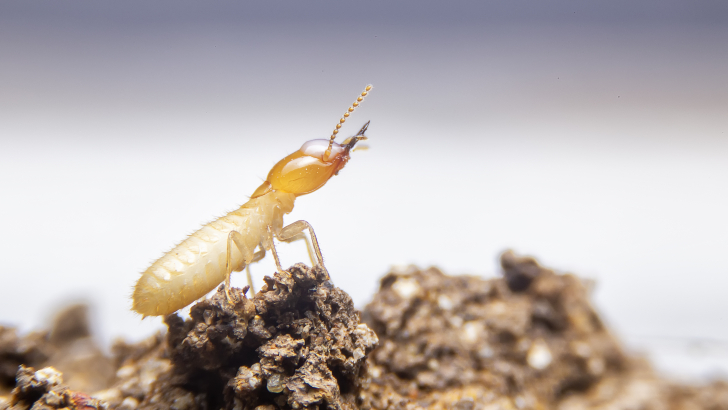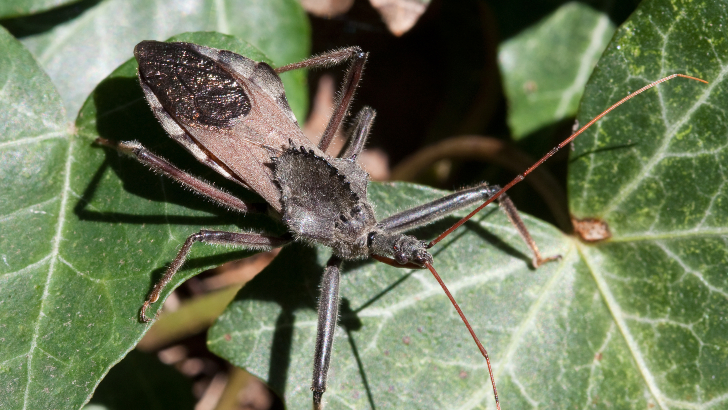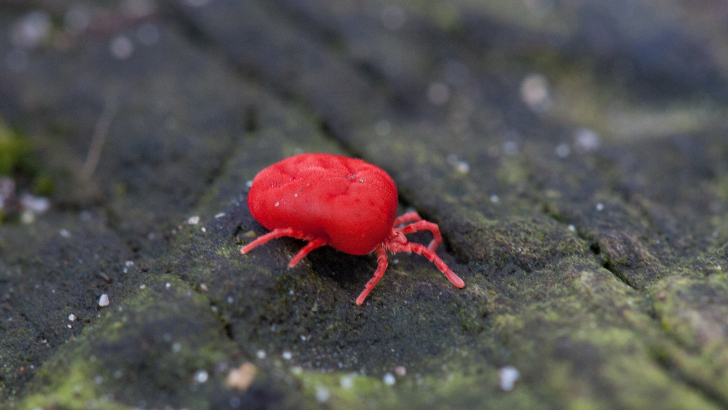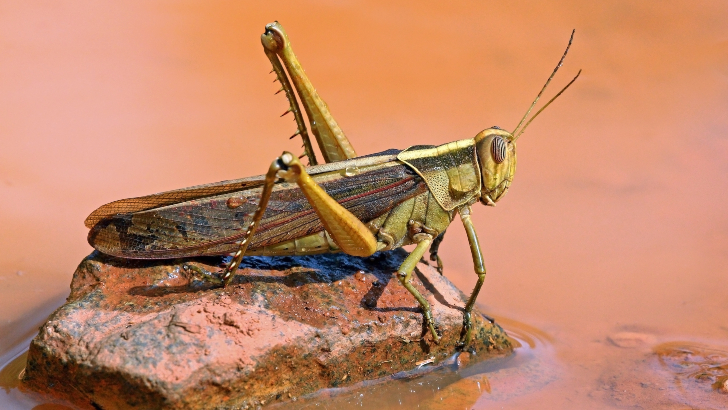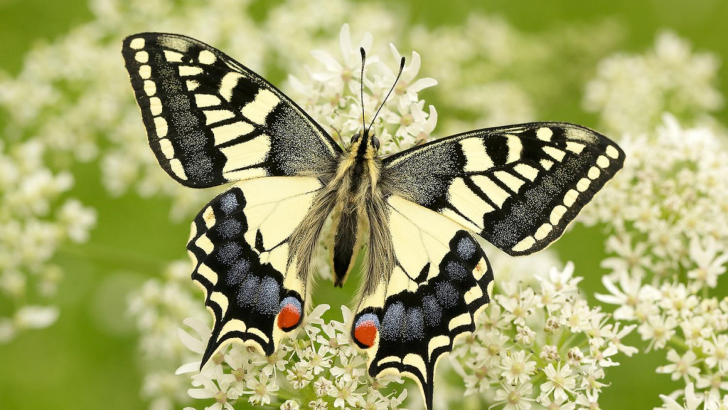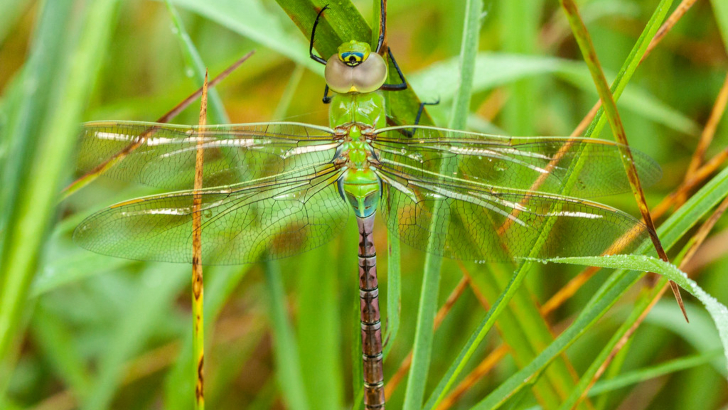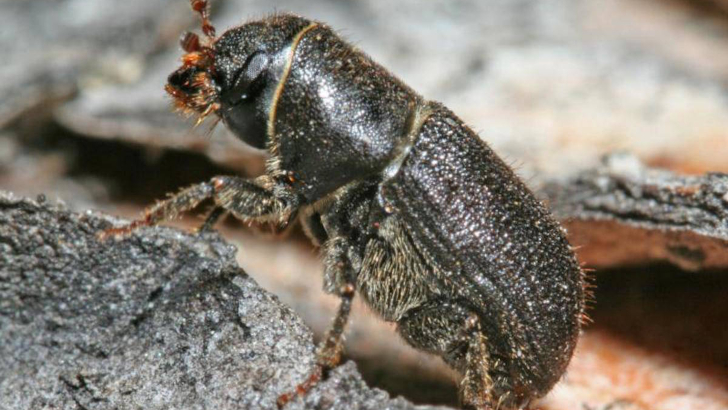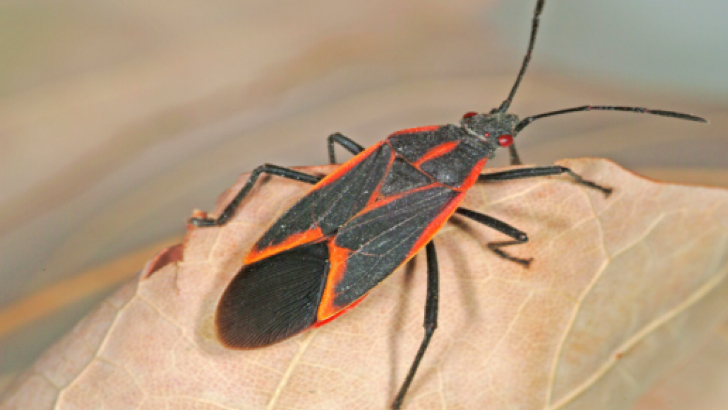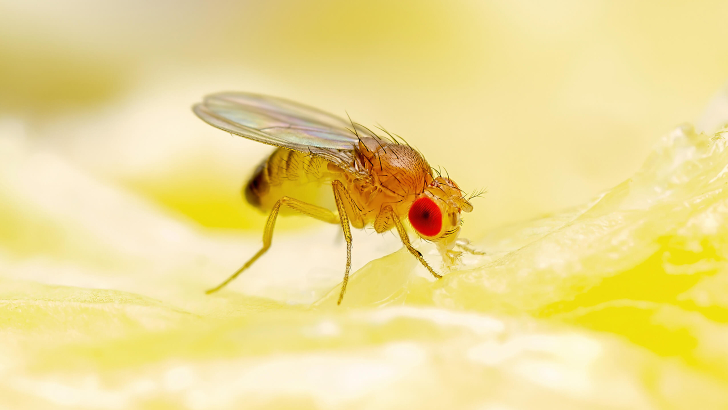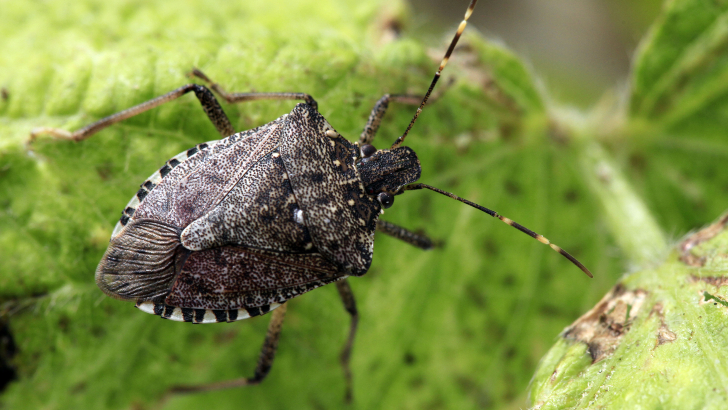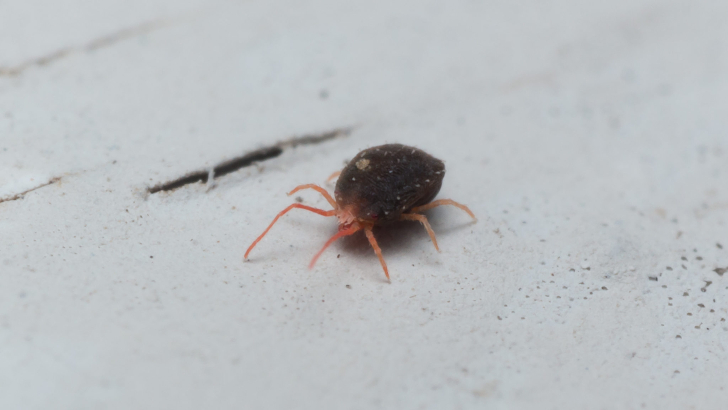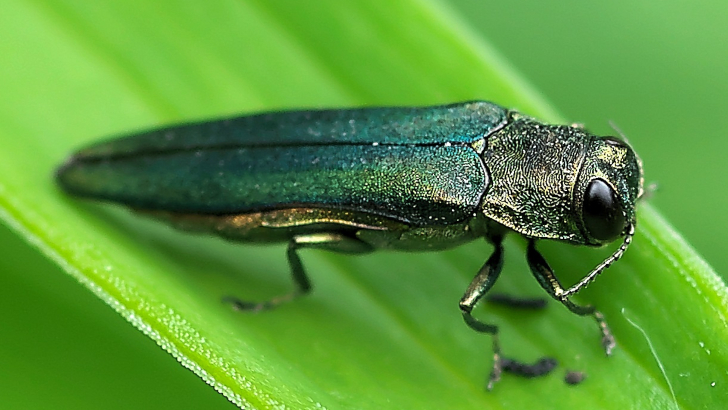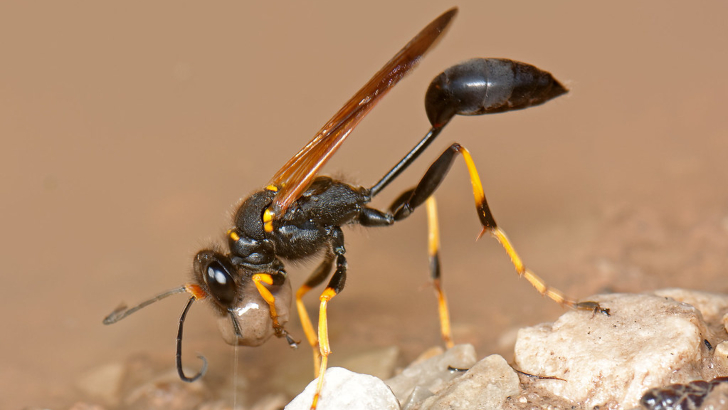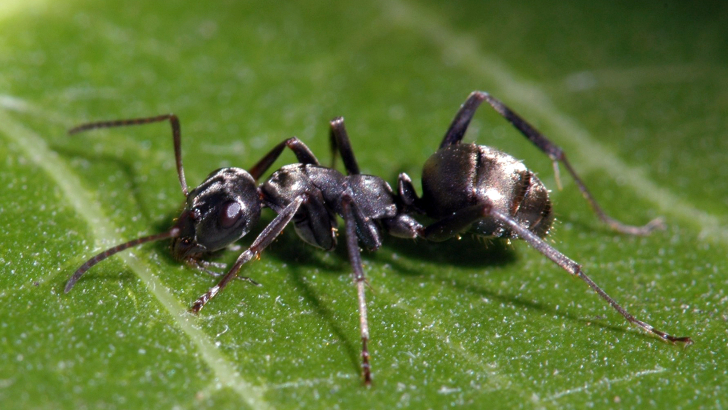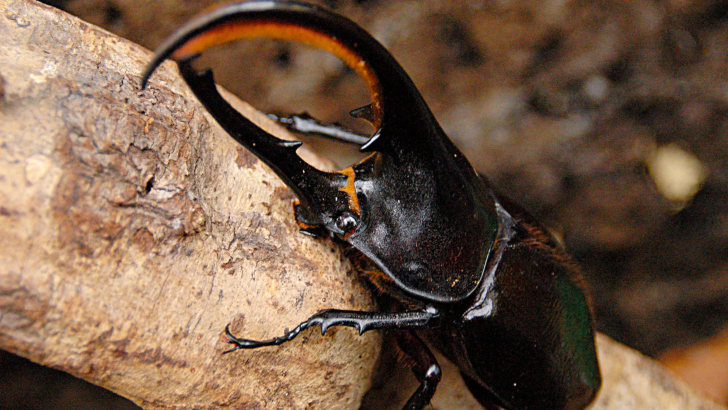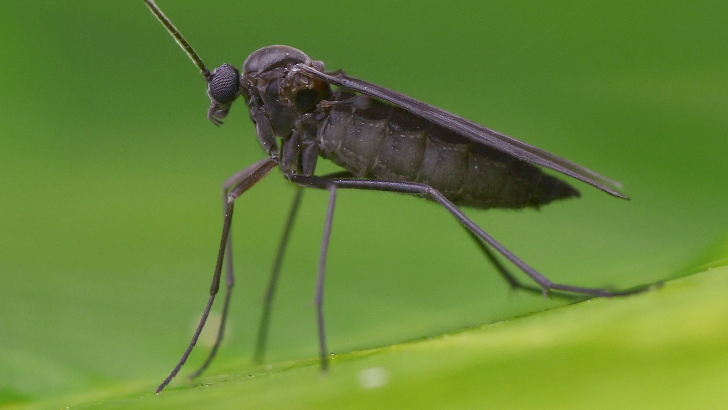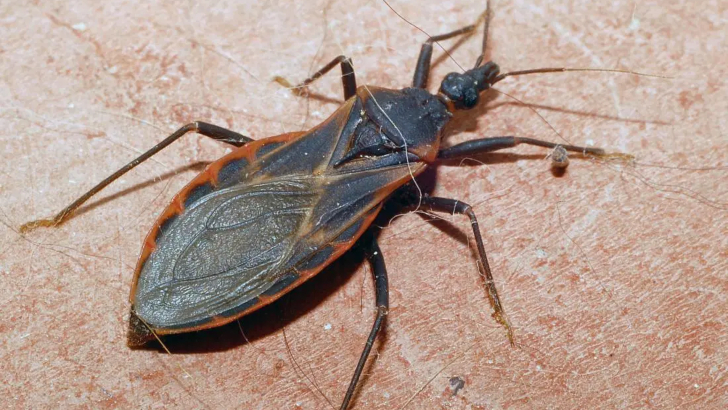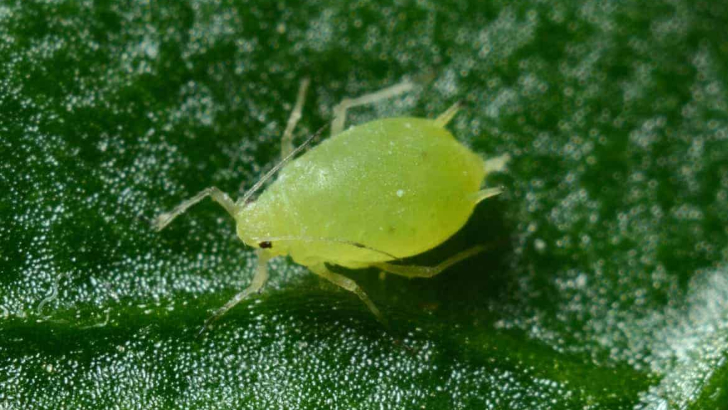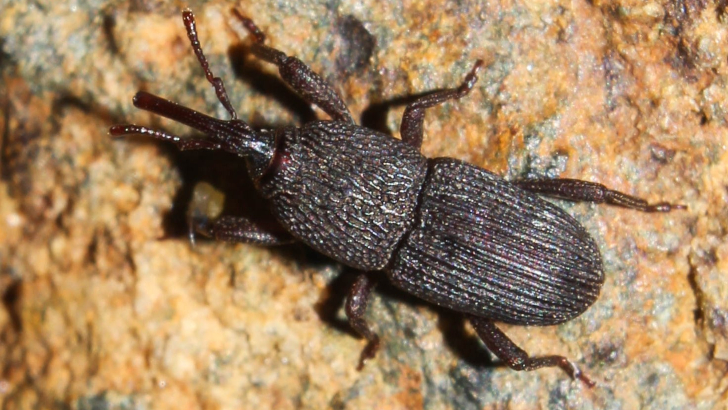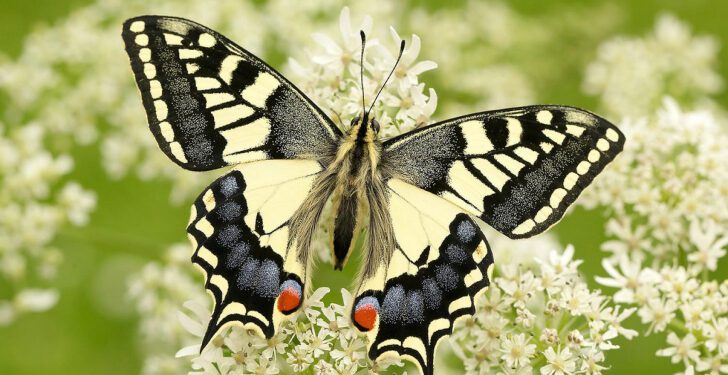It only takes a few minutes in nature to realize that there are a lot of insects in the world. According to Smithsonian Magazine, the insect family contains roughly 80% of all living species on the planet. At any given time, there are an estimated 200 million bugs for every human, or 10 quintillion (that's 10 with 18 zeroes behind it!) insects living on the planet. Do you think you can tell the difference between creepy crawlies, scary stingers, and harmless pests that appear out of nowhere every summer? Take this quiz to see if you can figure out what's all the fuss buzz is about!
Scientists know it as Apis mellifera, but can you name this fuzzy, slow-flying insect?
Honeybee
A honey bee (also spelled honeybee) is a eusocial flying insect within the genus Apis of the bee clade, all native to Afro-Eurasia. After bees spread naturally throughout Africa and Eurasia, humans became responsible for the current cosmopolitan distribution of honey bees, introducing multiple subspecies into South America (early 16th century), North America (early 17th century), and Australia (early 19th century).
There are more than 2,000 species of this beetle, which is basically a winged form of the glowworm. Can you name it?
Firefly
The Lampyridae are a family of insects in the beetle order Coleoptera, with more than 2,000 described species, many of which are light-emitting. They are soft-bodied beetles commonly called fireflies, lightning bugs, or glowworms for their conspicuous production of light, mainly during twilight, to attract mates. Light production in the Lampyridae originated as an honest warning signal that the larvae were distasteful; this was co-opted in evolution as a mating signal in the adults.
What is this harmless insect that feasts on plant-destroying aphids, and is said to bring good luck?
No, it’s not illegal to kill this creature, but it’s fine to admire its slender green form. Can you name it?
Praying mantis
Mantises are an order of insects that contains over 2,400 species in about 460 genera in 33 families. The largest family is the Mantidae (“mantids”). Mantises are distributed worldwide in temperate and tropical habitats. They have triangular heads with bulging eyes supported on flexible necks. Their elongated bodies may or may not have wings, but all Mantodea have forelegs that are greatly enlarged and adapted for catching and gripping prey; their upright posture, while remaining stationary with forearms folded, has led to the common name praying mantis.
Scientists call this insect genus Solenopsis, but people trying to enjoy the great outdoors during the summer probably call them _____.
Fire ant
Fire ants are several species of ants in the genus Solenopsis, which includes over 200 species. Solenopsis are stinging ants, and most of their common names reflect this, for example, ginger ants and tropical fire ants. Many of the names shared by this genus are often used interchangeably to refer to other species of ant, such as the term red ant, mostly because of their similar coloration despite not being in the genus Solenopsis.
Name this summer insect that swarms around your picnic and delivers a painful sting when threatened.
Can you ID this insect, which goes by the scientific name Musca domestica?
Housefly
The housefly (Musca domestica) is a fly of the suborder Cyclorrhapha. It is believed to have evolved in the Cenozoic Era, possibly in the Middle East, and has spread all over the world as a commensal of humans. It is the most common fly species found in houses. Adults are gray to black, with four dark, longitudinal lines on the thorax, slightly hairy bodies, and a single pair of membranous wings. They have red eyes, set farther apart in the slightly larger female.
Do you know the name of this insect, which the World Health Organization calls the deadliest animal on the planet?
Mosquito
Mosquitoes are members of a group of almost 3,600 species of small flies within the family Culicidae. The word “mosquito” is Spanish and Portuguese for “little fly”. Mosquitoes have a slender segmented body, one pair of wings, one pair of halteres, three pairs of long hair-like legs, and elongated mouthparts.
You really don’t want to run into these flat bugs known as Cimex lectularis. Can you guess their common name?
Bedbug
Bed bugs are insects from the genus Cimex that feed on blood, usually at night. Their bites can result in a number of health impacts including skin rashes, psychological effects, and allergic symptoms. Bed bug bites may lead to skin changes ranging from small areas of redness to prominent blisters.
Black and shiny with orange and red markings, can you name this oversized beetle that is on the endangered list?
American burying beetle
Nicrophorus americanus, also known as the American burying beetle or giant carrion beetle, is a critically endangered species of beetle endemic to North America. It belongs to the order Coleoptera and the family Silphidae. The carrion beetle in North America is carnivorous, feeds on carrion and requires carrion to breed. It is also a member of one of the few genera of beetle to exhibit parental care. The decline of the American burying beetle has been attributed to habitat loss, alteration, and degradation, and they now occur in less than 10% of their historic range.
Found throughout all of North America, name this flying insect that can deliver multiple, painful stings.
Paper wasp
Paper wasps are vespid wasps that gather fibers from dead wood and plant stems, which they mix with saliva, and use to construct nests made of gray or brown papery material. Some types of paper wasps are also sometimes called umbrella wasps, due to the distinctive design of their nests.
Choose the correct name for this biting insect that is just one-quarter the size of a mosquito.
Sandfly
Sandfly is a colloquial name for any species or genus of flying, biting, blood-sucking dipteran (fly) encountered in sandy areas. In the United States, sandfly may refer to certain horse flies that are also known as “greenheads” (family Tabanidae), or to members of the family Ceratopogonidae. The bites usually result in a small, intensely itchy bump or welt, the strength of which intensifies over a period of 5-7 days before dissipating. Moderate relief is achieved with varying success through the application of over the counter products such as Benadryl (ingested) or an analgesic cream such as After Bite (applied topically).
Brilliantly colored orange and black wings define this insect. Think you know what it’s called?
Monarch butterfly
The monarch butterfly or simply monarch (Danaus plexippus) is a milkweed butterfly (subfamily Danainae) in the family Nymphalidae. Other common names, depending on region, include milkweed, common tiger, wanderer, and black-veined brown.[6] It is often consider to be amongst the most familiar of North American butterflies. It is often considered an iconic pollinator species, although it is not an especially effective pollinator of milkweeds.
Identify this official Nevada State Insect, which scientists call Argia Vivida.
Vivid dancer
Argia vivida, the vivid dancer, is a species of narrow-winged damselfly in the family Coenagrionidae. This species is commonly found in springs and forests Central America and North America. Argia vivida inhabit areas of diverse temperatures due to thermoregulation. The species is also considered the state insect of Nevada.
Try to name this 300 million-year-old insect that every homeowner hates.
Cockroach
Cockroaches are a paraphyletic group of insects belonging to Blattodea, containing all members of the group except termites. About 30 cockroach species out of 4,600 are associated with human habitats. Some species are well-known as pests. The cockroaches are an ancient group, with ancestors originating during the Carboniferous period, some 300–350 million years ago.
Pick the correct name for this future butterfly, which is known for having a particularly painful sting.
Io Moth caterpillar
Automeris io, the Io moth or peacock moth, is a colorful North American moth in the family Saturniidae. The io moth is also a member of the subfamily Hemileucinae. The name Io comes from Greek mythology in which Io was a mortal lover of Zeus. The Io moth ranges from the southeast corner of Manitoba and in the southern extremes of Ontario, Quebec, New Brunswick and Nova Scotia in Canada, and in the US it is found from Montana, North Dakota, South Dakota, Nebraska, Colorado, New Mexico, Texas, Utah, east of those states and down to the southern end of Florida.
This creepy insect takes the pimple popping idea to a whole new level. Think you know its name?
Botfly
Botflies, also known as warble flies, heel flies, and gadflies, are a family of flies known as the Oestridae. Their larvae are internal parasites of mammals, some species growing in the host’s flesh and others within the gut. Dermatobia hominis is the only species of botfly known to parasitize humans routinely, though other species of flies cause myiasis in humans.
What is this insect that feasts on wood and can quickly destroy an entire house?
Termite
Termites are eusocial insects that are classified at the taxonomic rank of infraorder Isoptera, or alternatively as epifamily Termitoidae, within the order Blattodea (along with cockroaches). Termites were once classified in a separate order from cockroaches, but recent phylogenetic studies indicate that they evolved from cockroaches, as they are deeply nested within the group, and the sister group to wood eating cockroaches of the genus Cryptocercus. Previous estimates suggested the divergence took place during the Jurassic or Triassic.
Found throughout the U.S., choose the correct common name for this insect that scientists know as Arilus cristastus.
Wheel bug
Arilus cristatus, also known as the North American wheel bug, is a species of large assassin bug in the family Reduviidae and the only species of wheel bug found in the United States.[2][3] It is one of the largest terrestrial true bugs in North America, reaching up to 1.5 inches (38 mm) in length in its adult stage. It is sexually dimorphic, in that males are somewhat smaller than the females. A characteristic structure is the wheel-shaped pronotal armor. North American wheel bugs prey on caterpillars and beetles, such as Japanese beetles, the cabbage worm, orange dogs, tent caterpillars, and the Mexican bean beetle, all of which they pierce with their beak to inject salivary fluids that dissolve soft tissue.
Though they are actually arachnids, these critters are often confused with bugs. What are they?
Chiggers
Trombiculidae; commonly referred to as chiggers, but also known as spider mites, berry bugs, harvest mites, bush-mites, red bugs or scrub-itch mites, are a family of mites. Chiggers are often confused with jiggers – a type of flea. Several species of Trombiculidae in their larva stage bite their animal or human host and by embedding their mouthparts into the skin cause “intense irritation” or “a wheal, usually with severe itching and dermatitis”.
Name these insects that create swarms so destructive, they are actually referred to in the Bible as a plague.
Locust
Locusts are a group of certain species of short-horned grasshoppers in the family Acrididae that have a swarming phase. These insects are usually solitary, but under certain circumstances they become more abundant and change their behaviour and habits, becoming gregarious. No taxonomic distinction is made between locust and grasshopper species; the basis for the definition is whether a species forms swarms under intermittently suitable conditions.
Species in the family Papilonidae get their common name from a bird-like wing tip. Can you guess this common name?
Swallowtail butterfly
Swallowtail butterflies are large, colorful butterflies in the family Papilionidae, and include over 550 species. Though the majority are tropical, members of the family inhabit every continent except Antarctica. The family includes the largest butterflies in the world, the birdwing butterflies of the genus Ornithoptera. Swallowtails have a number of distinctive features; for example, the papilionid caterpillar bears a repugnatorial organ called the osmeterium on its prothorax.
Do you know the name of this creepy crawly known for transmitting Lyme disease and Rocky Mountain spotted fever?
Tick
Ticks (order Ixodida) are parasitic arachnids that are part of the mite superorder Parasitiformes. Adult ticks are approximately 3 to 5 mm in length depending on age, sex, species, and “fullness”. Ticks are external parasites, living by feeding on the blood of mammals, birds, and sometimes reptiles and amphibians. The timing of the origin of ticks is uncertain, though the oldest known tick fossils are from the Cretaceous period, around 100 million years old. Ticks are widely distributed around the world, especially in warm, humid climates.
Select the correct name for this insect, which actually has far fewer than 100 legs.
Centipede
Centipedes are predatory arthropods belonging to the class Chilopoda (Ancient Greek χεῖλος, kheilos, lip, and New Latin suffix -poda, “foot”, describing the forcipules) of the subphylum Myriapoda, an arthropod group which also includes millipedes and other multi-legged creatures. Centipedes are elongated segmented (metameric) creatures with one pair of legs per body segment. All centipedes are venomous and can inflict painful bites, injecting their venom through pincer-like appendages known as forcipules.
This bug gets its name from the fact that it looks like a needle used to repair socks. Can you ID it?
Common green darner
The green darner or common green darner (Anax junius), after its resemblance to a darning needle, is a species of dragonfly in the family Aeshnidae. One of the most common and abundant species throughout North America, it also ranges south to Panama. It is well known for its great migration distance from the northern United States south into Texas and Mexico. It also occurs in the Caribbean, Tahiti, and Asia from Japan to mainland China. It is the official insect for the state of Washington in the United States.
Found in the western half of North America, name this insect that has a nasty habit of destroying trees.
Mountain pine beetle
The mountain pine beetle (Dendroctonus ponderosae) is a species of bark beetle native to the forests of western North America from Mexico to central British Columbia. It has a hard black exoskeleton, and measures approximately 5 millimetres (1⁄4 in), about the size of a grain of rice. In western North America, a recent outbreak of the mountain pine beetle and its microbial associates has affected wide areas of lodgepole pine forest, including more than 160,000 km2 (40 million acres) of forest in British Columbia.
This insect feasts on the leaves and seeds of maple and ash trees. Do you know the common name of Boisea trivittata?
Boxelder
The boxelder bug (Boisea trivittata) is a North American species of true bug. It is found primarily on boxelder trees, as well as maple and ash trees. The adults are about 13 millimetres (0.51 in) long with a dark brown or black coloration, relieved by red wing veins and markings on the abdomen; nymphs are bright red. In 2020, this species invaded Chile, thus becoming an invasive species.
This flying insect hangs out in your kitchen and can seem impossible to evict. Do you know what it’s called?
Fruit fly
Drosophila melanogaster is a species of fly (the taxonomic order Diptera) in the family Drosophilidae. The species is often referred to as the fruit fly or lesser fruit fly, or less commonly the “vinegar fly” or “pomace fly”.[a][4] Starting with Charles W. Woodworth’s 1901 proposal of the use of this species as a model organism, D. melanogaster continues to be widely used for biological research in genetics, physiology, microbial pathogenesis, and life history evolution. As of 2017, five Nobel Prizes have been awarded to drosophilists for their work using the insect.
Native to Asia, this invasive insect started showing up in the States in the ’90s. What is it called?
Stink bug
Pentatomidae is a family of insects belonging to the order Hemiptera, generally called shield bugs or stink bugs. Pentatomidae is the largest family in the superfamily Pentatomoidea, and contains around 900 genera and over 4700 species. As hemipterans, the pentatomids have piercing sucking mouthparts, and most are phytophagous, including several species which are severe pests on agricultural crops. However, some species, particularly in the subfamily Asopinae, are predatory and may be considered beneficial.
What is the common name of these tiny red insects that go by the scientific name Bryobia praetiosa?
Clover mite
The clover mite, Bryobia praetiosa Koch, is one of the larger plant feeding mites found in the landscape. It often becomes a pest indoors after heavy rain, excessive heat or a change in the season, which stimulate massive numbers to enter buildings. The mites appear as moving dark spots to the naked eye, crawling around walls, windows and doors. Crushing the mites to kill them leaves a large reddish spot. Fortunately, the mites do not reproduce indoors and will die within a few days from dehydration.
Can you guess the name of this invasive bug from Asia that has a distinctive metallic green coloring?
Ash borer
The emerald ash borer (Agrilus planipennis), also known by the acronym EAB, is a green buprestid or jewel beetle native to north-eastern Asia that feeds on ash species. Females lay eggs in bark crevices on ash trees, and larvae feed underneath the bark of ash trees to emerge as adults in one to two years. In its native range, it is typically found at low densities and does not cause significant damage to trees native to the area. Outside its native range, it is an invasive species and is highly destructive to ash trees native to Europe and North America.
You’ve seen this shiny black stinging insect hovering over your picnic table, but can you guess its name?
Mud dauber
Mud dauber (or “mud wasp” or “dirt dauber”) is a name commonly applied to a number of wasps from either the family Sphecidae or Crabronidae which build their nests from mud; this excludes members of the family Vespidae (especially the subfamily Eumeninae), that are instead referred to as “potter wasps”. Mud daubers belong to different families and are variable in appearance. Most are long, slender wasps about 1 inch (25 mm) in length. The name refers to the nests that are made by the female wasps, which consist of mud molded into place by the wasp’s mandibles
Do you know the name of this insect that can carry more than 20 times its own body weight?
Mating season starts in the summer for this large green or black insect. Think you can guess its name?
Hercules beetle
The Hercules beetle (Dynastes hercules) is a species of rhinoceros beetle native to the rainforests of Central America, South America, and the Lesser Antilles. It is the longest extant species of beetle in the world, and is also one of the largest flying insects in the world.
Where you live determines what you call these tiny pests, but which of these is a common name for the insect shown in this image?
Gnat
A gnat is any of many species of tiny flying insects in the dipterid suborder Nematocera, especially those in the families Mycetophilidae, Anisopodidae and Sciaridae. They can be both biting and non-biting. Most often they fly in large numbers, called clouds. “Gnat” is a loose descriptive category rather than a phylogenetic or other technical term, so there is no scientific consensus on what constitutes a gnat. Some entomologists consider only non-biting flies to be gnats.
Officially known as the Triatomine bug, name this species of assassin bug that can transmit a scary parasite to humans.
Kissing bug
The members of the Triatominae, are also known as conenose bugs, kissing bugs (so-called from their habit of feeding from around the mouths of people), or vampire bugs. Other local names for them used in The Americas include barbeiros, vinchucas, pitos, chipos and chinches. Most of the 130 or more species of this subfamily feed on vertebrate blood; a very few species feed on invertebrates. They are mainly found and widespread in the Americas, with a few species present in Asia, Africa, and Australia.
Despite those scary pincers, this critter doesn’t really harm humans … but do you know what it’s called?
Earwig
Earwigs make up the insect order Dermaptera. With about 2,000 species in 12 families, they are one of the smaller insect orders. Earwigs have characteristic cerci, a pair of forcep-like pincers on their abdomen, and membranous wings folded underneath short, rarely used forewings, hence the scientific order name, “skin wings”. Some groups are tiny parasites on mammals and lack the typical pincers. Earwigs are found on all continents except Antarctica.
Hundreds of these bugs can settle into the underside of a single leaf to feast on its sap. What is this pest called?
Aphid
Aphids are small sap-sucking insects and members of the superfamily Aphidoidea. Common names include greenfly and blackfly, although individuals within a species can vary widely in color. The group includes the fluffy white woolly aphids. A typical life cycle involves flightless females giving live birth to female nymphs—who may also be already pregnant, an adaptation scientists call telescoping generations—without the involvement of males. Maturing rapidly, females breed profusely so that the number of these insects multiplies quickly.
What’s that wiggling around in your bag of flour? Yup, it’s a bug, but can you ID it?
Wheat weevil
The wheat weevil (Sitophilus granarius), also known as the grain weevil or granary weevil, is an insect that feeds on cereal grains, and is a common pest in many places. It can cause significant damage to harvested stored grains and may drastically decrease crop yields. The females lay many eggs and the larvae eat the inside of the grain kernels.
Know the name of this pest that keeps your dog or cat scratching away all summer?
Flea
Flea, the common name for the order Siphonaptera, includes 2,500 species of small flightless insects that live as external parasites of mammals and birds. Fleas live by ingesting the blood of their hosts. Adult fleas grow to about 3 millimetres (1⁄8 inch) long, are usually brown, and have bodies that are “flattened” sideways or narrow, enabling them to move through their hosts’ fur or feathers. They lack wings; their hind legs are extremely well adapted for jumping. Their claws keep them from being dislodged, and their mouthparts are adapted for piercing skin and sucking blood.
[giveaway id=12098]
